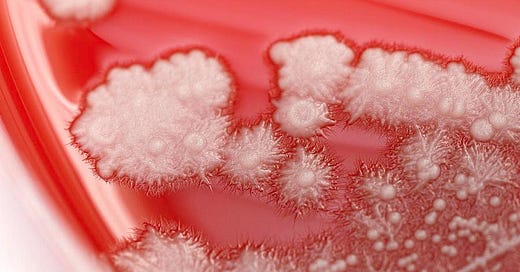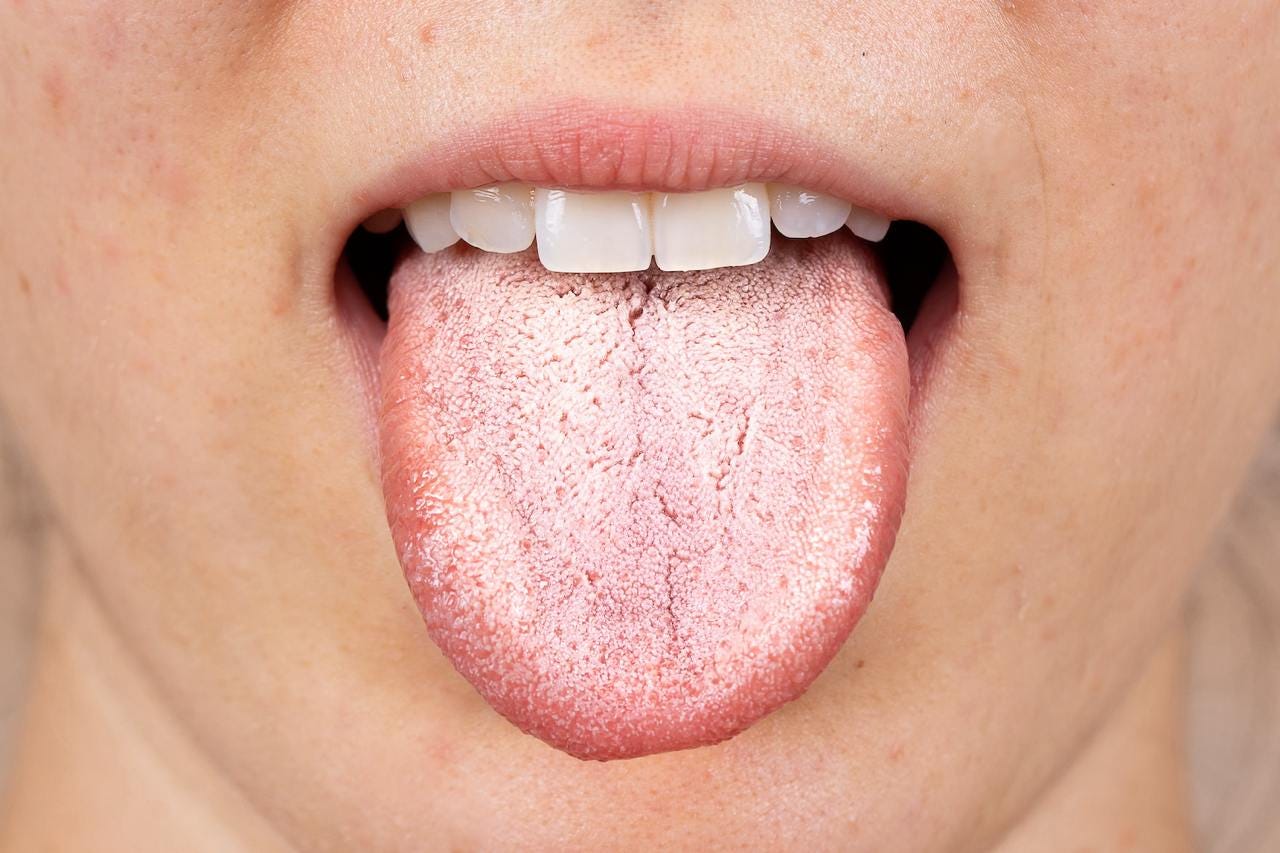One of the most difficult organisms to diagnose and reach homeostasis within today's world is Candida albicans (i.e., “Candida,” “C. albicans”). C. albicans is a yeast that is part of the normal flora of the entire digestive tract and is commonly found in the genital and urinary organs. By six months of age, 90% of infants test positive for Candida. As such, many people are familiar with this organism — especially women.
As an opportunistic organism, Candida competes with other organisms to control its growth. Changes in pH, high levels of simple sugars, hormone imbalance, antibiotic exposure, and the presence of toxins and drugs, such as steroids, can disrupt this equilibrium in the gut and genitourinary tract.
With this said, Candida is part of our natural biology as a mechanism of homeostasis, so it grows on demand as part of those mechanisms to keep harmful components from doing further damage. To accomplish this, it has the capability to burrow through the walls of the intestine, enter the bloodstream, and make its way throughout the body. This has been seen by those unfamiliar with Candida as invasive and a “bad” pathogen, but it’s actually the opposite, as I will explain.
Symptoms and treatments of yeast proliferation
There are a variety of tests practitioners use in attempts to diagnose yeast proliferation, such as stool, blood, and live blood cell tests. Yet, because these tests are not always reliable, practitioners and individuals often rely on common symptoms associated with the gastrointestinal, genitourinary, endocrine, and/or neurological systems, including:
Thrush
Indigestion
Acid reflux
Abdominal gas/bloating
Diarrhea
Constipation
Rectal itching
Vaginitis
Headaches
Migraines
Excessive fatigue
Irritability
Dizziness
Itching
Acne
Eczema
Athlete’s foot
Sinus inflammation
Persistent cough
Sore throat
Earache
Pre-menstrual syndrome
Low sex drive
Muscle weakness
Sensitivity to fragrances and/or other chemicals
Chronic pain
This broad list is significant, and the allopathic community will say it’s indicative of the toxicity associated with Candida. However, we’re going to look at this through another lens.
An often-used treatment strategy includes killing the Candida “overgrowth.” In allopathy, pharmaceutical anti-fungal agents are commonly used. Amphotericin B, for example, is administered intravenously, which can cause severe multi-organ damage and result in death. Other classes of these drugs have effects ranging from mild nausea, vomiting, diarrhea, headache, dizziness, and skin rash to severe blistering, bruising, jaundice, seizures, bone marrow suppression, and gastrointestinal, liver, kidney, and central nervous system toxicity.
In the natural health realm, non-pharmaceutical approaches to killing or limiting the growth of Candida are used but have not been well researched..
Grape seed extract has comparable activity to miconazole in suppressing C. albicans growth. Independent studies of a silver product called ACS200® demonstrate a “complete kill” against Candida in less than 3 minutes. Even with megadoses of ACS200®, there were no toxic signs observed. But don’t run out and get yourself a bottle of silver just yet.
Why fungal organisms would proliferate in the first place
Mercury, lead, cadmium, arsenic, pesticides, insecticides, dioxins, phthalates, VOCs, and PCBs are just some of the foreign substances that have created an excessive toxic body burden of harmful chemicals. Of all the toxins, mercury is the most destructive to the neurological and endocrine systems because it is a deadly mutagen that damages DNA. Mercury contributes to or causes many illnesses, including Autistic characteristics, what many view as “auto-immune” diseases (the body doesn’t attack itself), Alzheimer’s, cancers, heart disease, endocrine problems, and neurological and behavioral disorders.
Murray and Kidby (1975) demonstrated that mercury, specifically, is incorporated into the cell wall of yeast. This is the key to the supposed toxic effects of candidiasis and the basis of the Herxheimer reaction one experiences.
So, let’s get this straight: The body gets exposed to metals and, in its wisdom, sequesters and encapsulates these by storing them in low blood supply areas and proliferating parasites to digest them. The low blood supply areas keep them out of circulation where minimal damage can happen, and the opportunistic organisms, after reproducing rapidly, have internalized the metals while concurrently keeping them out of your cells.
That sounds like a solution to a problem — not the problem itself. Are you still not convinced? The list of symptoms associated with candidiasis is the same as those associated with mercury toxicity!
So, which came first? It’s actually a Candida-mercury cycle that needs to be understood.
Suppose a kill-only protocol, such as any of the ones stated above, was used to attack the fungal proliferation without addressing the mercury. The dying organism would release its contents, including mercury, before excretion, resulting in re-exposure and re-toxification. Mercury being released from dying cells is highly toxic to surrounding tissues. Therefore, it is impossible to manage candida overgrowth without removing the toxic burden of mercury within it.
So what’s the solution?
We need to fully understand the real cause of fungal proliferation. Our body is designed to intelligently reach homeostasis at every moment. It is always doing what is in our best interest, given the circumstances.
In the case of candidiasis, the solution is not to kill the organism that is there to remedy toxic exposure. This is why protocols for Candida “overgrowth” are very ineffective and harmful to the body's own wisdom.
Candida is not the villain; foreign materials harmful to health, including mercury, is. You do yourself a disservice by only trying to control Candida, which is part of the solution. Instead, dig deeper and find ways to reduce your body's burden of heavy metals and other man-made chemicals while reducing your exposure. Once this is done, the fungi will retreat since they have no job to do and nothing to eat, causing them to decrease in numbers — just enough to go back to their corner while ready to reproduce quickly if needed. This is called “terrain therapy.”
How?
In urine studies, nano-sized zeolite increased urinary output of mercury, lead, and other toxic metals by several thousand percent. Extremely toxic mercury levels were in the urine of patients while taking nano zeolite who had undetectable mercury levels in their baseline urine. These results indicate how difficult it is for the body to remove mercury and other toxins without an effective chelator.
Traditional chelating agents have limitations in safely removing heavy metals. Agents such as EDTA have a high affinity for essential nutrient minerals, such as calcium, and remove them simultaneously with toxins. If not carefully monitored, this can be dangerous, causing rapid muscle weakness and potential heart damage. Additionally, because of their weak bond, these chelating agents can pull mercury from the tissues, for instance, and then drop it into the bloodstream, where it can redeposit in the brain or other vital organs.
There is, however, zeolite, which is a natural indigestible mineral that is the strongest chelator we know of. Zeolites irreversibly magnetically bind toxins, making them harmless, then safely remove them through the urinary tract. This prevents mercury from being recycled into other Candida cells.
MasterPeace Nano Zeolites and/or MasterRestore zeolite formula made by Human Consciousness Support will irreversibly bind and excrete the mercury associated with Candida “overgrowth,” the mycotoxins released from funguses, as well as any other positively charged toxin, which is the reason for the candida to proliferate in the first place. Not only that, the sea plasma in MasterPeace offers bioavailable minerals to take the place of the heavy metals so the cells can immediately reach homeostasis.
To learn more about MasterPeace and its companion products, visit our website!
References:
1. Horn, D.L., et al. “Epidemiology and outcomes of candidemia in 2019 patients: data from the prospective antifungal therapy alliance registry.” Clin Infect Dis. 2009 Jun 15; 48(12):1695-703. https://pubmed.ncbi.nlm.nih.gov/19441981/.
2. Ignacio, C. and Thai, D. “Comparative Analysis of Antifungal Activity of Natural Remedies Versus Miconazole Nitrate Salt Against Candida albicans.” Biological Sciences Dept. California Polytechnical State Institute. 2005 Murray and Kidby. https://citeseerx.ist.psu.edu/document?repid=rep1&type=pdf&doi=3c55c511cc599130b4cd86c2c987e517cac14728.
3. Murray, A.D., Kidby, D.K. “Sub-cellular Location of Mercury in Yeast Grown in the Presence of Mercuric Chloride.” Society for General Microbiology. 1975. https://www.microbiologyresearch.org/content/journal/micro/10.1099/00221287-86-1-66?crawler=true
4. Truss, C.O. “Candida albicans: Mental and neurologic manifestations.” Journal of Orthomolecular Psychiatry. 1978; 7:1, 17:37. https://isom.ca/wp-content/uploads/2020/01/JOM_1978_07_1_03_Tissue_Injury_Induced_By_Candida_Albicans_Mental-.pdf






What a great explanation of why it is sooo important to get to the root cause!!!